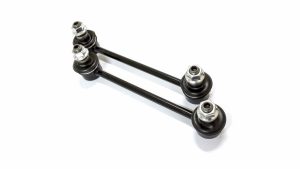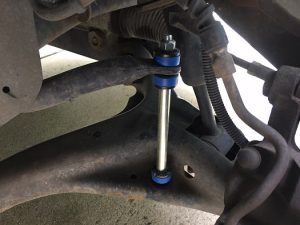When it comes to vehicle suspension, the stabilizer bar links — commonly known as sway bar links — often go unnoticed, yet they play a crucial role in ride stability and handling. These slender components connect your stabilizer (anti-roll) bar to the control arms or struts, ensuring that during turns, your vehicle maintains grip and control. This article explores their function, failure signs, maintenance tips, and their crucial role in suspension tuning.
What Stabilizer Bar Links Do

The stabilizer bar itself reduces body roll by transferring force from one side of the suspension to the other during cornering. The link, typically a short rod with bushings or joints at each end, attaches it firmly to the suspension assembly, translating bar force into the wheels.
Primary Functions
-
Transfer anti-roll forces
-
Maintain consistent suspension geometry
-
Reduce chassis sway
-
Improve steering feel and response
Without functional links, the stabilizer bar becomes ineffective, compromising handling and safety.
Components and Types of Stabilizer Bar Links
1. Material and Construction
| Type | Description | Pros | Cons |
|---|---|---|---|
| Steel Bar + Rubber Bushings | Simple and cost-effective | Quiet operation | Rubber can degrade quickly |
| Steel with Ball Joints | Articulated pivot design | Durable and precise | More expensive, adds noise |
| Adjustable Links | Threaded design for tuning | Fine-tune ride height/roll stiffness | Requires manual setup |
| Polyurethane Bushings | Rubber alternative | Long-lasting, firmer feel | May amplify NVH |
2. Link Styles
-
Front vs. Rear Links: Differ in length and load requirements.
-
Single vs. Dual Links: Rear suspensions sometimes use two links for added stability.
-
Adjustable Links: Useful when modifying ride height or installing aftermarket springs.
Signs of Link Wear or Failure
Detecting early warning signs can prevent more extensive suspension damage or loss of control.
-
Clunking or rattling when changing direction
-
Excessive body roll or swaying
-
Uneven tire wear
-
Loose or sloppy steering
-
Visual wear: torn boots, bent link rod
Troubleshooting Table
| Symptom | Possible Cause | Recommended Action |
|---|---|---|
| Clunking noise during turns | Worn bushings or joints | Inspect links; replace in pairs if damaged |
| Poor cornering stability | Broken or disconnected link | Reinstall torqued to spec |
| Uneven tire wear | Misaligned suspension components | Full suspension check + alignment |
| Loose steering feel | Excessive link play | Check torque; replace failing components |
Maintenance & Replacement Tips
1. Routine Inspection
Inspect during alignment or tire rotations. Look for:
-
Cracked or missing bushings
-
Rust or damage on link bars
-
Joint looseness
2. Replace in Pairs
Always replace both links on an axle to maintain balanced handling, even if only one appears faulty.
3. Upgrade Options
Consider more durable options when lowering suspension or using stiffer components:
-
Adjustable links for custom ride setup
-
Polyurethane bushings for longer service life
4. Proper Installation
-
Torque to manufacturer specs
-
Use anti-seize if exposed to road salt
-
Align with bar and arm before tightening
Performance Enhancements and Link Upgrades

Why Upgrade?
-
Improved chassis stiffness and roll resistance
-
Consistent geometry during dynamic driving
-
More predictable response in aggressive handling
Popular Upgrades
-
Adjustable Links — allow micro-tuning after lowering suspension
-
Billet Steel or Aluminum Links — lightweight and high-strength
-
Polyurethane Bushings — less flex for sharper, responsive handling
Impact on Suspension Tuning
-
On lowered cars, longer sway bar links are essential.
-
Adjustable links help maintain correct preload and avoid unwanted binding of suspension components.
-
When paired with upgraded stabilizer bars, high-quality links preserve handling sharpness and reduce body roll.
Where to Buy Quality Stabilizer Bar Components
Looking to reinforce your suspension or replace worn links?
Buy Stabilizer & Components online
They offer a broad selection — from OEM-style steel links with rubber bushings to adjustable billet-link kits. All are filtered by vehicle model and fitment. Perfect for daily drivers, off-road rigs, or performance builds.
Final Thoughts
Though small and often hidden, stabilizer bar links have a big impact on how your vehicle corners and feels to drive. Worn or broken links compromise handling, tire wear, and even safety.
By regularly inspecting links, choosing quality replacements, and pairing them appropriately with other suspension upgrades, you can maintain precise handling and ride quality. Whether for routine maintenance, off-road use, or performance tuning, don’t overlook the power of the stabilizer links.
Ready to upgrade your suspension’s unsung heroes? Choose high-grade stabilizer links that match your ride’s style and driving needs — and feel the difference in control with every turn.